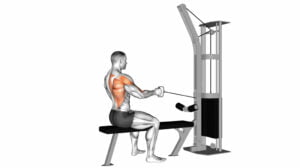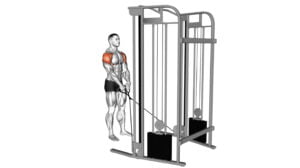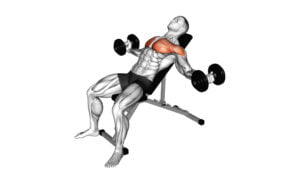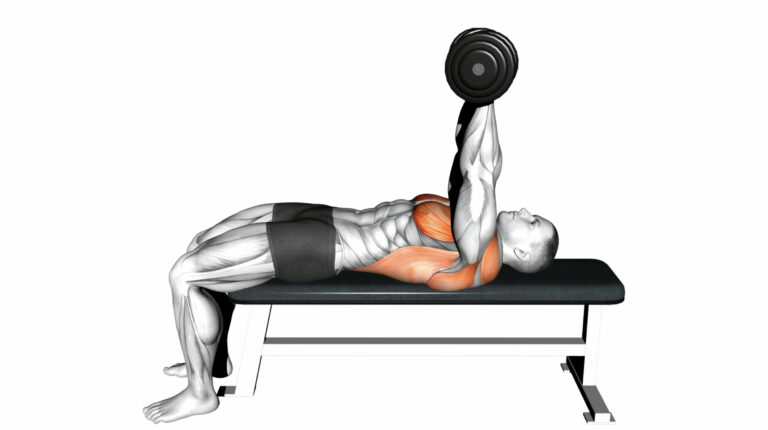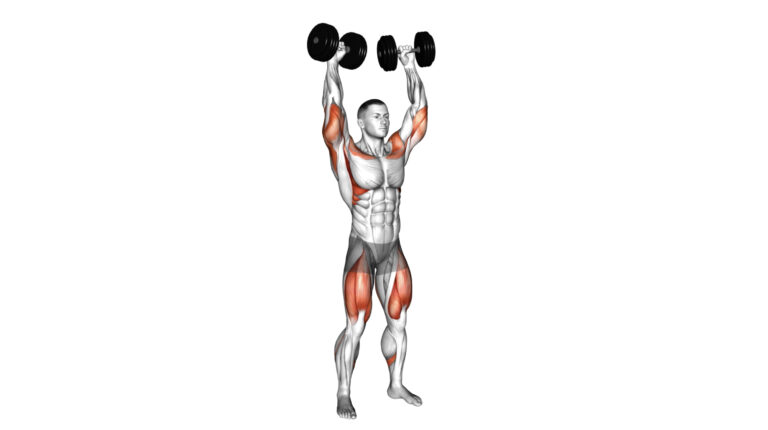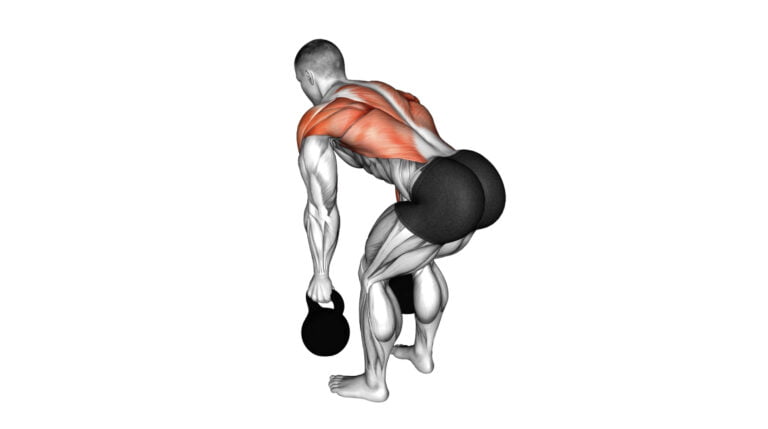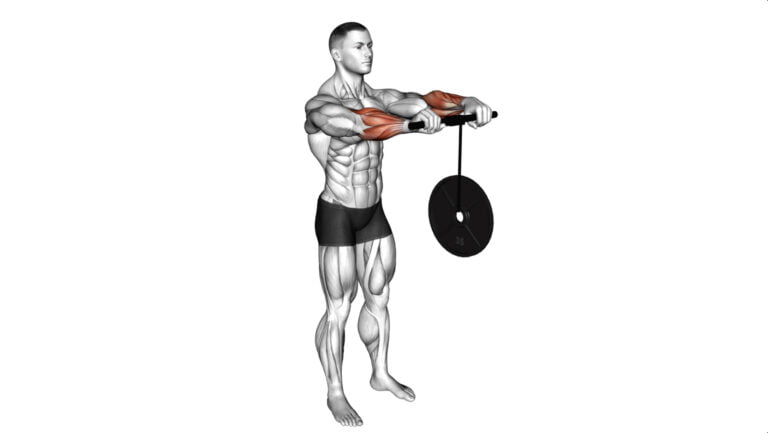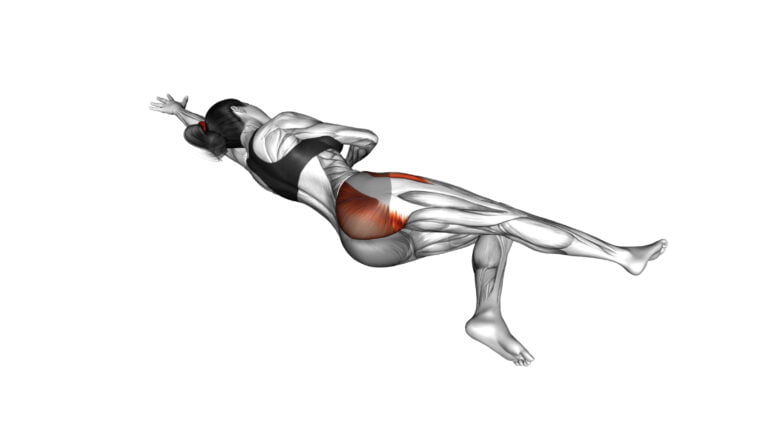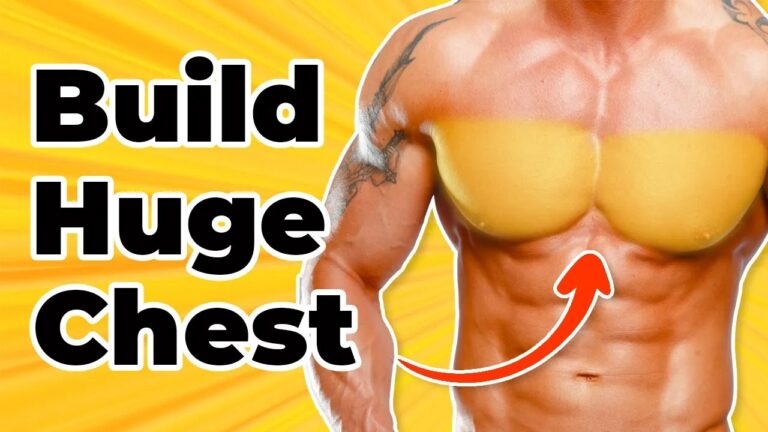5 Essential Pull Exercises With Dumbbells – Mastering Strength And Definition

If you’re looking to carve out a chiseled back and powerful arms, understanding the power of pull exercises is non-negotiable. Often overshadowed by their showy counterpart—the push-up—pull movements are the unsung heroes of an impressive physique.
As a seasoned personal trainer with over a decade in the trenches, I’ve seen firsthand how integrating dumbbell pull exercises can revolutionize clients’ strength, definition, and overall muscular health.
Pulling weight isn’t just about bulking up; it’s essential for sculpting balance into your body that wards off injury and aligns your posture like a pro. This article isn’t just another list of exercises; it’s your ticket to unlocking new levels of fitness mastery with practical strategies tailored specifically to those handy weights at home or in the gym.
Get ready – stronger, defined muscles await!
Key Takeaways
- Dumbbell pull exercises like bent – over rows, deadlifts, and rear delt raises build strength in the back and arms while improving posture and balance.
- Correct form is vital when performing these movements to prevent injuries; engage your core, keep a straight back, and avoid using momentum instead of muscle strength.
- As you progress with dumbbell pull exercises, increase the weight or reps gradually to continuously challenge your muscles for further growth and definition.
- Varying grips during exercises can target different muscle groups for overall balanced development and reduce the risk of overuse injuries.
- Pull exercises should be part of a balanced workout routine that includes both push and pull movements for symmetrical strength enhancement.
The Importance of Pull Exercises With Dumbbells for Strength and Definition
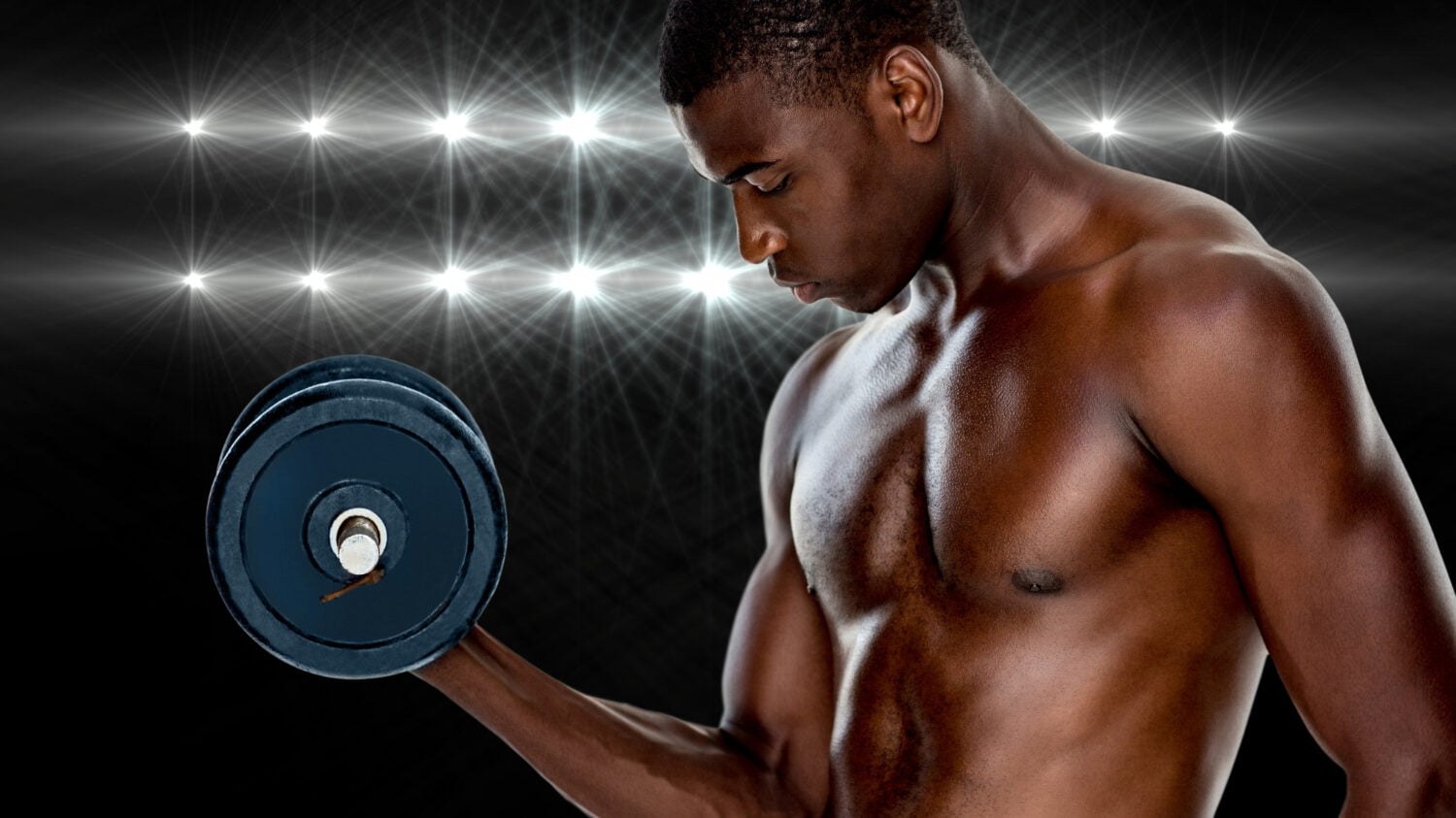
Pull exercises are crucial for targeting and strengthening the back and arm muscles, improving posture and balance, enhancing overall upper body strength, and preventing injuries. Incorporating these exercises into your workout routine can help you achieve greater strength and definition in your upper body.
Targeting back and arm muscles
Dumbbell exercises are powerful for sculpting your back and arms, giving you that sought-after definition and strength. By engaging in pull exercises with dumbbells, you work on major muscle groups like the latissimus dorsi, rhomboids, biceps, and triceps.
These muscles play a pivotal role in performing daily activities as well as enhancing your athletic abilities.
Incorporating best pull day exercises with dumbbells into your routine ensures a comprehensive approach to upper body conditioning. As you lift, lower, or row the weights during these movements, you’re not only building muscle but also improving joint stability.
Working out with dumbbells offers the flexibility of adjusting weight easily and can be effectively done at home for those who prefer exercising in their own space.
Improving posture and balance
Focusing on strengthening your back and arms sets the stage for better posture and balance. Strong muscles in these areas are crucial for holding your spine straight and maintaining equilibrium throughout daily activities.
Pull exercises at home with dumbbells, like rows and deadlifts, engage your core, which is foundational to good posture. These movements require you to control the weight against gravity, enhancing your stability.
As you perform best pull exercises with dumbbells consistently, expect a noticeable improvement in how you stand and move. Your body learns to distribute weight evenly from right training, reducing strain on any one part of your body.
This not only makes you look taller and more confident but also minimizes the risk of falls or muscle imbalances that could lead to injury down the line. Through regular practice of these targeted pull exercises with dumbbells, watch as every step becomes steadier and every stance stronger.
Enhancing overall upper body strength
Building upper body strength is more than just beefing up your appearance; it’s about creating a solid foundation. With pull exercises using dumbbells, you activate multiple muscle groups in the shoulders, chest, back, and arms.
This comprehensive approach to training not only makes everyday tasks easier but also boosts your performance in various sports and physical activities. Using dumbbells for these pull movements offers the added benefit of working each side of your body independently, which can help correct muscular imbalances and increase overall stability.
Stronger muscles mean better protection against strains and sprains that often occur during physical exertion. Regularly incorporating these pull exercises with dumbbells into your routine ensures that you’re building resilient muscles ready to handle whatever comes their way—whether it’s hoisting groceries or swinging a tennis racket.
Next up: discovering the specific exercises to put this strength-building strategy into action.
Preventing injuries
To prevent injuries, it is crucial to prioritize proper form and technique when performing pull exercises with dumbbells. Maintaining a strong core and stable posture throughout each movement can help reduce the risk of strain or injury to the back, shoulders, and arms.
Additionally, gradually increasing weight and reps as strength improves can aid in building resilience in the muscles and joints, lowering the likelihood of overuse injuries. Ensuring an appropriate warm-up routine before engaging in pull exercises can also prepare the body for physical exertion, minimizing the potential for muscle pulls or strains during workouts.
Incorporating varied grips while performing pull exercises with dumbbells helps distribute stress across different muscle groups, reducing repetitive stress on specific areas and lowering the chance of strain or fatigue-related injuries.
5 Essential Pull Exercises with Dumbbells
Get ready to master your strength and definition with these essential pull exercises using dumbbells. Read on to find out how you can take your workout to the next level.
1. Dumbbell Bent-over Row
To perform the dumbbell bent-over row, stand with feet shoulder-width apart and hold a dumbbell in each hand. Hinge at the hips, keeping your back straight and core engaged. Slowly lower the dumbbells toward the ground, then pull them up towards your chest, squeezing your shoulder blades together.
Lower the weights back down with control and repeat.
This exercise targets the muscles of the upper back, including the latissimus dorsi and trapezius, as well as the biceps. It also engages stabilizing muscles throughout your core and lower body for balance and support.
2. Dumbbell Deadlift
Performing dumbbell deadlifts is an effective way to target the hamstrings, glutes, and lower back muscles. Start by standing with your feet shoulder-width apart and holding a dumbbell in each hand in front of your thighs.
Keep your back straight as you bend at the hips and knees, lowering the dumbbells towards the ground while maintaining a neutral spine. Engage your core and push through your heels to return to a standing position, squeezing your glutes at the top of the movement for maximum benefit.
The dumbbell deadlift is a fundamental exercise that not only strengthens major muscle groups but also improves overall stability and balance. Incorporating this compound movement into your workout routine can contribute to better posture and lower body strength.
3. Dumbbell Deep Push-up and Renegade Row
For the Dumbbell Deep Push-up and Renegade Row, begin in a plank position with a dumbbell in each hand. Lower your body into a deep push-up while maintaining proper form. Once back at the top of the push-up, shift your weight to one side and row one dumbbell towards your hip.
Return to the starting position and repeat on the other side.
These compound exercises target multiple muscle groups simultaneously, engaging both upper body strength and stabilizing core muscles. The combination of a challenging push-up with an intense rowing movement effectively builds strength in the chest, arms, shoulders, back, and core for an efficient full-body workout that promotes muscular balance.
4. Dumbbell Head Supported Row
To perform the Dumbbell Head Supported Row, position yourself lying face down on an inclined bench with a dumbbell in each hand. Rest your forehead against the top of the bench and let your arms hang straight down toward the floor.
Begin by retracting your shoulder blades, then pull the dumbbells up toward your ribcage while keeping your elbows close to your body. Lower the weights back down in a controlled manner and repeat for the desired number of reps.
This exercise effectively targets muscles in the upper back, helping to improve strength and stability. By utilizing proper form and engaging key muscle groups, you can maximize its benefits as part of a well-rounded workout routine focused on enhancing overall upper body strength and definition.
5. Dumbbell Rear Delt Raise
To perform the dumbbell rear delt raise, stand with feet shoulder-width apart, holding a dumbbell in each hand. Keep a slight bend in the elbows as you raise the dumbbells out to your sides until they reach shoulder height.
Engage your core and keep your back straight as you lift the weights. Slowly lower them back to starting position and repeat for the desired number of reps.
This exercise effectively targets the posterior deltoid muscles, which are crucial for overall shoulder strength and stability. By incorporating this movement into your routine, you can enhance your upper body definition while reducing the risk of shoulder injuries.
Tips for Mastering Pull Exercises with Dumbbells
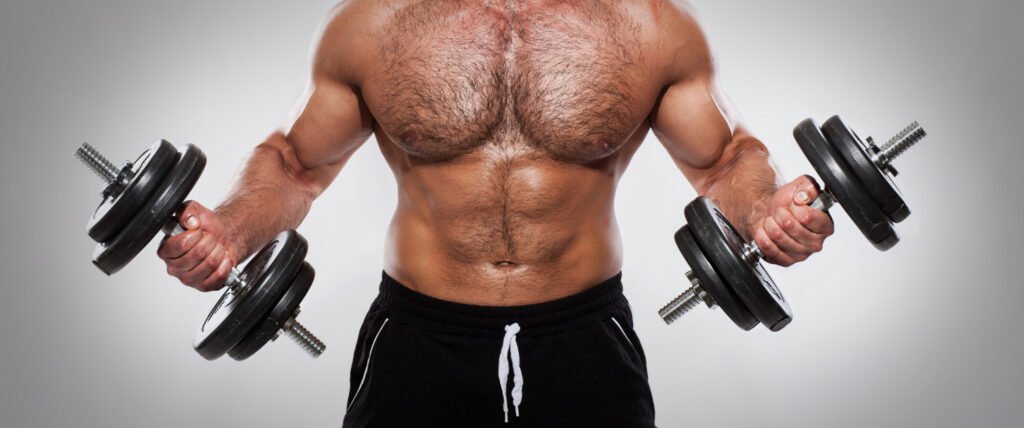
Focus on proper form and technique to avoid injury and maximize muscle engagement, gradually increase weight and reps as your strength improves, and use a variety of grips for different muscle targeting.
To learn more about mastering strength and definition with essential pull exercises using dumbbells, keep reading!
Focus on proper form and technique
Mastering proper form and technique is crucial when performing pull exercises with dumbbells. Keep your back straight, engage your core, and avoid arching or rounding your spine during movements.
Focus on controlled motions to ensure you’re targeting the intended muscles effectively.
Maintain a firm grip on the dumbbells while executing each exercise, and concentrate on smooth, deliberate movements throughout the entire range of motion. Pay attention to the alignment of your body and aim for symmetrical execution to prevent straining one side over the other.
Common Mistakes

Improper posture can lead to ineffective workouts and potential injury.
- Neglecting proper form: Failing to maintain a straight back during exercises can strain the lower back and diminish the effectiveness of the workout.
- Using excessive weight: Lifting too heavy can compromise form, leading to muscle imbalances and potential injury.
- Relying on momentum: Swinging the weights rather than lifting them with control reduces the engagement of targeted muscles.
- Inconsistent breathing: Holding your breath during exercises can decrease performance and hinder results.
- Lack of variety: Failing to switch up grips or exercise variations limits the overall muscle development.
Recommended Sets And Reps
Avoiding common mistakes is crucial, but equally important is following recommended sets and reps to maximize the effectiveness of your pull exercises. Below is a guide to help structure your dumbbell pull workout for strength and definition.
| Exercise | Sets | Reps |
|---|---|---|
| Dumbbell Bent-over Row | 3-4 | 8-12 |
| Dumbbell Deadlift | 3-4 | 6-10 |
| Dumbbell Deep Push-up and Renegade Row | 2-3 | 8-10 (each side) |
| Dumbbell Head Supported Row | 3 | 10-12 |
| Dumbbell Rear Delt Raise | 3 | 12-15 |
This table provides a starting point. Adjust the sets and reps based on your individual fitness level and goals. As strength and endurance build, incrementally add weight or increase reps to continue challenging the muscles. Always strive for progressive overload to see continuous improvements in muscle strength and definition.
Use a variety of grips for different muscle targeting
Experimenting with different grips during your pull exercises can effectively target various muscles in your back and arms. For instance, an overhand grip in exercises like bent-over rows primarily works the lats, while an underhand grip emphasizes the biceps more.
Switching between grips not only adds variety to your workout but also helps engage different muscle groups for a well-rounded strength-building routine.
Moreover, incorporating varied grips challenges your muscles from different angles, promoting balanced development and reducing the risk of overuse injuries. By adjusting your grip style on dumbbells for each exercise, you can optimize muscle targeting and achieve comprehensive upper body strength gains.
Gradually increase weight and reps as strength improves
As strength improves, gradually increase the weight and number of reps for each pull exercise. This helps to continue challenging your muscles and promoting further growth and definition.
By progressively overloading your muscles, you can avoid plateaus and keep making progress in your strength and muscle development journey.
Pushing yourself to add a little more weight or complete an extra rep when you feel ready will help you see ongoing improvements in your overall strength and muscular endurance. It’s important to listen to your body, pay attention to how it responds, and adjust accordingly as you advance with your pull exercises.
Incorporate pull exercises into a balanced workout routine
Gradually increasing weight and reps as strength improves will help you to build muscle mass and definition. To incorporate pull exercises into a balanced workout routine, aim for two to three sessions per week, focusing on movements that target the back and arm muscles.
Ensure variety by incorporating various pull exercises such as dumbbell bent-over rows, deadlifts, deep push-up with renegade row, head-supported rows, and rear delt raises. Adding these exercises into your routine will enhance overall upper body strength while preventing injuries.
Balancing your workout is key for optimal results; it helps avoid overworking certain muscle groups while neglecting others. By including pull exercises in your regular fitness regimen, you’ll achieve balanced muscular development for a strong and well-defined physique.
Conclusion

In conclusion, mastering the 5 essential pull exercises with dumbbells is vital for enhancing upper body strength and definition. These practical strategies target back and arm muscles, improving posture, balance, and preventing injuries.
Implementing these methods will lead to significant improvements in your overall fitness level. Remember to focus on proper form, gradually increase weight as strength improves, and incorporate these exercises into a balanced workout routine.
Explore further resources to deepen your understanding of effective pull exercises and keep pushing forward towards achieving your fitness goals!
FAQs
1. What are pull exercises with dumbbells good for?
Pull exercises with dumbbells help you get stronger and build muscle definition, especially in your back, arms, and shoulders.
2. Can beginners do these essential pull exercises?
Yes! Beginners can start with lighter weights and learn the correct form to safely perform these strength-building pull exercises.
3. How often should I do these dumbbell pull exercises?
To see improvements in strength and definition, aim to include these dumbbell pull workouts into your routine two to three times a week.
4. Do I need special equipment for these exercises other than dumbbells?
Nope! All you need is a pair of dumbbells to perform these five essential pull exercises effectively for gaining muscle strength and definition.

Author
Years ago, the spark of my life’s passion ignited in my mind the moment I stepped into the local gym for the first time. The inaugural bead of perspiration, the initial endeavor, the very first surge of endorphins, and a sense of pride that washed over me post-workout marked the beginning of my deep-seated interest in strength sports, fitness, and sports nutrition. This very curiosity blossomed rapidly into a profound fascination, propelling me to earn a Master’s degree in Physical Education from the Academy of Physical Education in Krakow, followed by a Sports Manager diploma from the Jagiellonian University. My journey of growth led me to gain more specialized qualifications, such as being a certified personal trainer with a focus on sports dietetics, a lifeguard, and an instructor for wellness and corrective gymnastics. Theoretical knowledge paired seamlessly with practical experience, reinforcing my belief that the transformation of individuals under my guidance was also a reflection of my personal growth. This belief holds true even today. Each day, I strive to push the boundaries and explore new realms. These realms gently elevate me to greater heights. The unique combination of passion for my field and the continuous quest for growth fuels my drive to break new ground.

